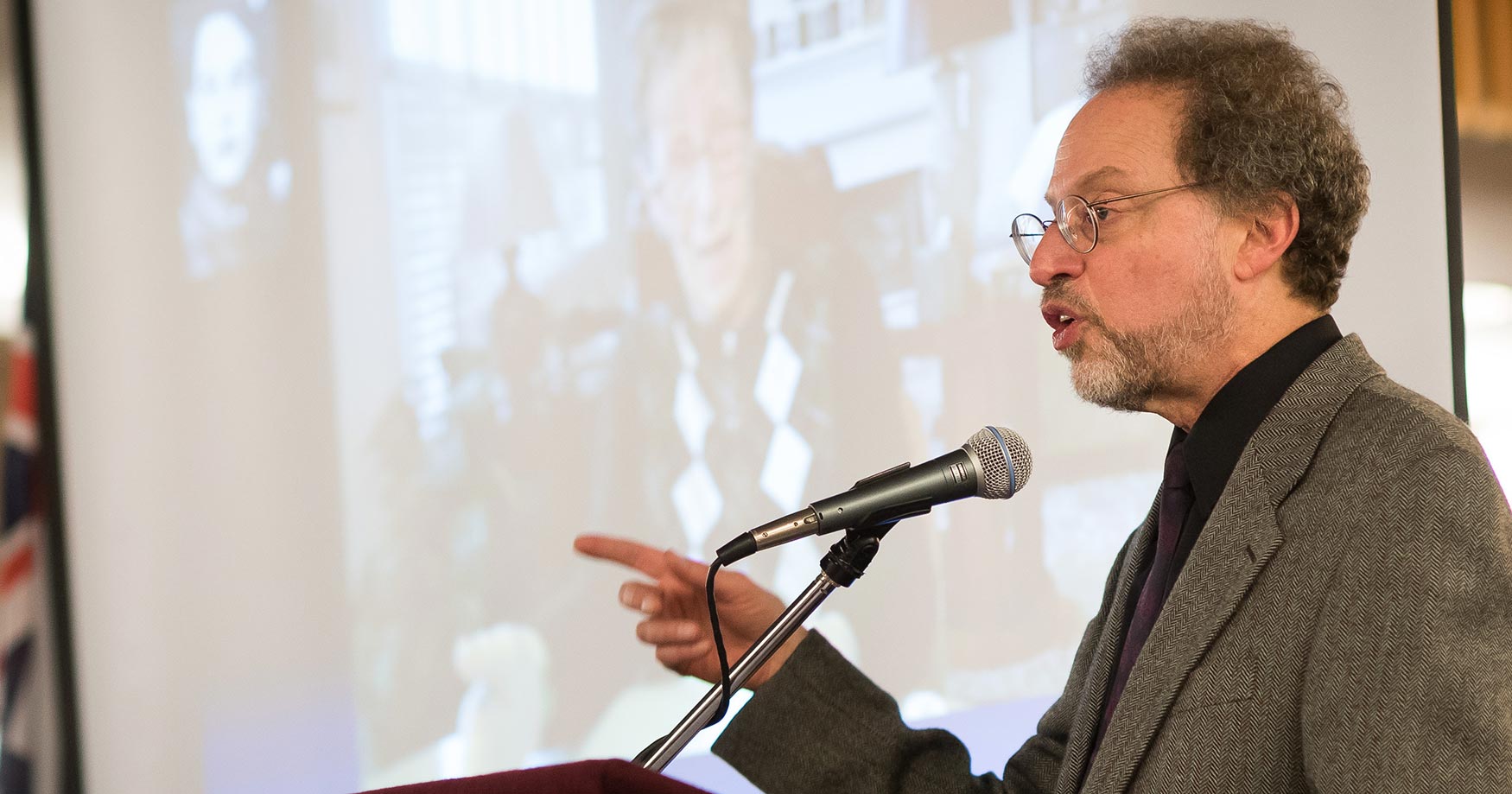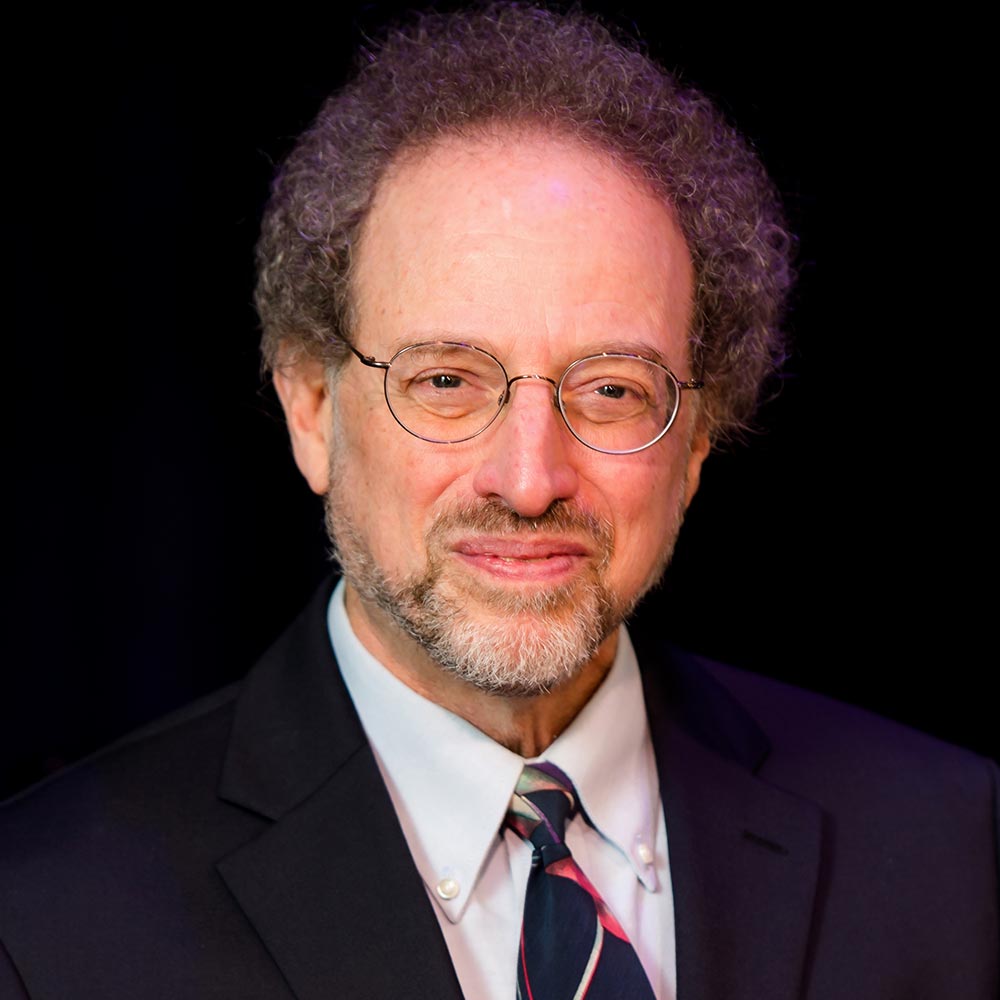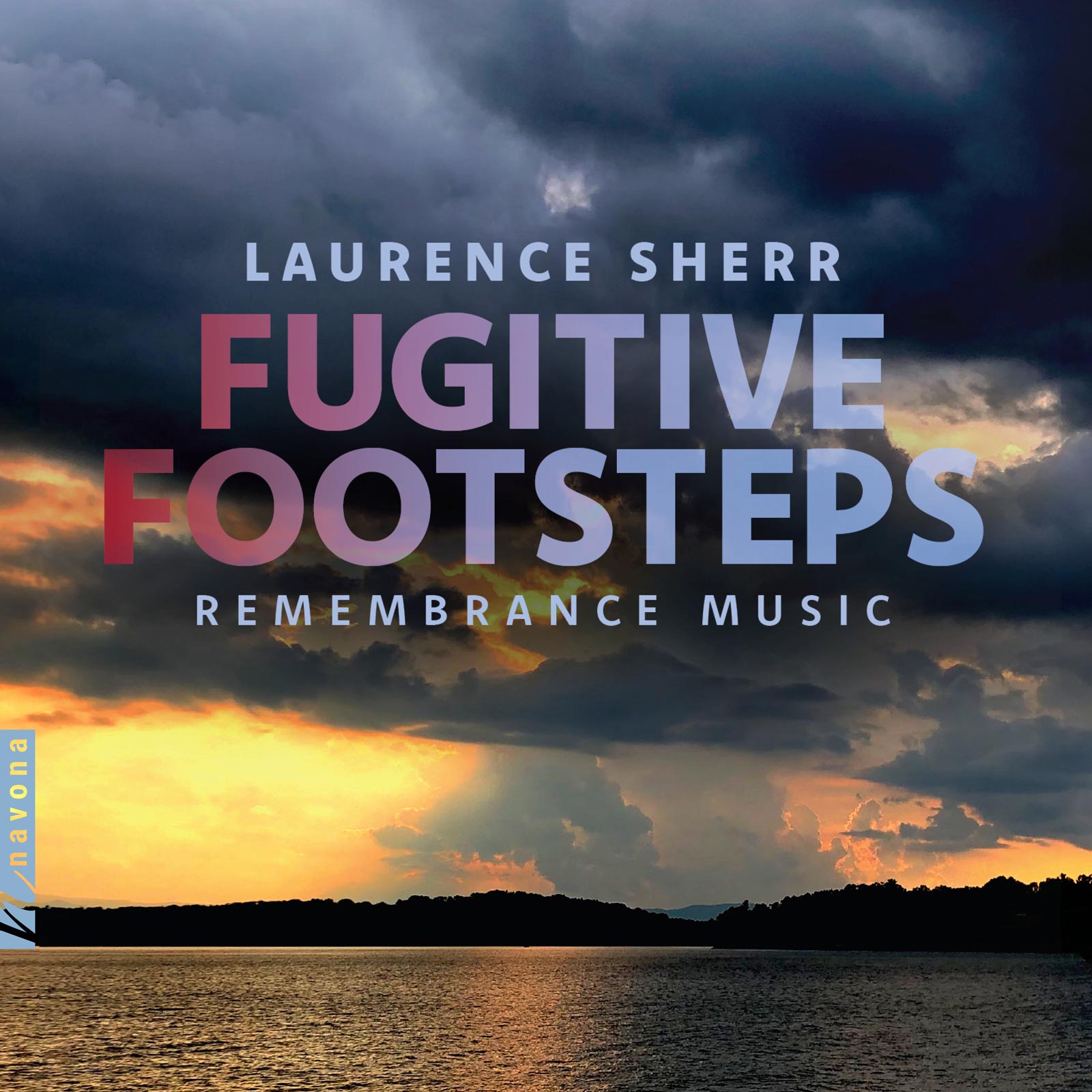
Laurence Sherr delves deep into the spirit of resilience with FUGITIVE FOOTSTEPS: REMEMBRANCE MUSIC. Not shying away from musically pointing to suffering and despair, Sherr paints a vivid picture of persecution, trauma, and survivor’s guilt but also of silent and active opposition, hope, renewal, and the eventual overcoming of adversity. Through remembrance and tribute, these compositions unapologetically aim to tell stories of Holocaust resistance and survival, not only in concept but also in their individual tonal language: at all times fully conscious of their cultural roots, vast heritage, a sacrosanct sense of belonging, and the duty of defending these treasures. But perhaps, even more, these works reveal pathways to clearer, brighter horizons.
Today, Laurence is our featured artist in “The Inside Story,” a blog series exploring the inner workings and personalities of our composers and performers. Read on to learn about the artistic journey that led to his interest in Klezmer music, and the experiences he hopes listeners will receive upon listening to his Navona Records release…
What have been your biggest inspirations on your musical journey?
Varied inspirations throughout my career have provided creative stimulation, influence, and at times, source material for quotation or reworking. As covered in the album notes, the primary influences for the works on this release are Holocaust-era songs from the partisans, ghettos, and camps, Judaic cantorial singing, various klezmer styles, and the poetry of Holocaust survivor and Nobel laureate Nelly Sachs. Also important were the expressive and technical potentials of the musicians for whom the pieces were written, most especially the cellists in the cello sonata consortium, a few of whom provided collaborative feedback and advice during the composition of the work. I have found this collaborative input to be quite valuable, for example in previous works for flutists and guitarists, and it is my preferred way of working. Nature has inspired several works, including my Nocturne and Ouachita Waters, both for piano, and Blue Ridge Frescos for classical guitar. Visual arts, poetry, and spirituality have provided inspiration at various points in my career, as have such styles such as klezmer, blues, and Indian classical music. Of course, the music of composers in Western classical music history is a foundation, especially those whose music I admire and whose scores I study.
What advice would you give to your younger self if given the chance?
To keep in better contact with the musicians I knew during my degree studies, and during the early years of my career, and to better trust my musical intuition, even if it runs counter to the prevailing aesthetic of my circumstances.
What emotions do you hope listeners will experience after hearing your work?
I hope that the music on this album, and the associated historical material and poetry, will provide listeners a range of experiences, not only emotions, but also reflections, historical perspectives, edification, empathy, and an increased desire for social justice and respect for those who have experienced, and those who still are encountering, marginalization, discrimination, mistreatment, and hardships of all kinds. This includes the victims of oppression, persecution, and genocide, and the refugees fleeing from unlivable circumstances. While each listener will respond personally, some common emotions and experiences have been reported by listeners on four continents, notably those who have written to me following performances. The experienced emotions and feelings they shared include sadness, the stirring of memories of loved ones, hopefulness, and inspiration. They also shared that they felt moved and sensed meaningfulness, powerfulness, beauty, and tribute.
How have your influences changed as you grow as a musician?
My influences have evolved as I have encountered different circumstances and exposures during my life. I played clarinet in elementary and most of high school, switching to saxophone at the end, and this exposed me to standard concert band repertory. However, I was listening to pop, and then rock, eventually leading me to favor such rock fusion groups as Frank Zappa and John McLaughlin and the Mahavishnu Orchestra. After quitting music in my senior year of high school, I only returned to playing clarinet and consequently began serious music study after pursuing other undergraduate work. This led to the expansion of my exposure to encompass chamber, orchestra, and choral music, and the development of a personal taste for the western classical music canon as I began composing. During graduate studies, my listening tastes expanded to include avant-garde classical music and jazz, and due to my exposure to the guest artists and work of the ethnomusicology faculty and graduate students, to various world music genres, especially Hindustani and Carnatic (Indian) classical music. This led to an interest in klezmer and Eastern European folk music, and my formation and performance in a klezmer band after completing graduate studies and returning to Atlanta.
Where and when are you at your most creative?
I like to have large blocks of uninterrupted time over multiple weeks to focus on my creative work. When combined with being in a natural setting away from daily distractions, the situation is often optimal. As such, I flourished in numerous artist colony and other residencies earlier in my career, writing music at the Hambidge Center for the Creative Arts and Sciences (GA), Virginia Center for the Creative Arts (in VA and in Austria), the MacDowell Colony (NH), Hot Springs National Park (AR), and Seaside Institute (FL). Also spurring my creativity is working directly with the performers for whom I am creating — meeting with them before starting the new work to hear them demonstrate their performance approaches, both those they favor and those that might stretch their abilities, then getting feedback on the music I am writing, and later collaborating and revising further during rehearsals. Such collaborations occurred, for example, while writing Journeys Within: Chamber Concerto for Flute for Atlanta Symphony flutist Paul Brittan, Duo Concertante for flutist Christina Guenther, Dhammapada Verses (soprano, flute, piano, and percussion) for the musicians in the contemporary ensemble Thamyris, and my cello sonata while working with cellists Theresa Villani, Inbal Megiddo, and Karen Becker.
What’s the greatest performance you’ve ever seen, and what made it special?
While I don’t want to restrict my answer to a single performance, I will limit it to several of the greatest live performances I’ve seen. In each case, it was some combination of musical expression, communication, virtuosity, and overall impact that left me feeling invigorated, dazzled, and immensely grateful for experiencing the artistry of these performers.
In no particular order:
Ella Fitzgerald with the Count Basie Orchestra
Gustav Holst’s The Planets by the Chicago Symphony Orchestra
Zakir Hussein
Frederic Rzewski performing his The People United Will Never Be Defeated
John McLaughlin and the Mahavishnu Orchestra

Laurence Sherr is recognized for his uniquely interconnected work on music related to the Holocaust, uniting his activities as composer of remembrance music, researcher, lecturer, producer of remembrance events, author, and educator. He has presented this work in the Czech Republic, Germany, Poland, England, Norway, San Marino, Israel, Australia, New Zealand, Brazil, and across the United States. Containing “sacred beauty and abundant lyricism,” and “moments that convey energy, lyricism, drama, and bravado” (EarRelevant), Sherr’s album – FUGITIVE FOOTSTEPS: REMEMBRANCE MUSIC – was awarded a Gold Medal in the Global Music Awards. He designs events that feature remembrance music enriched by stories of Holocaust-era creators and concurrent musical and historical developments.

